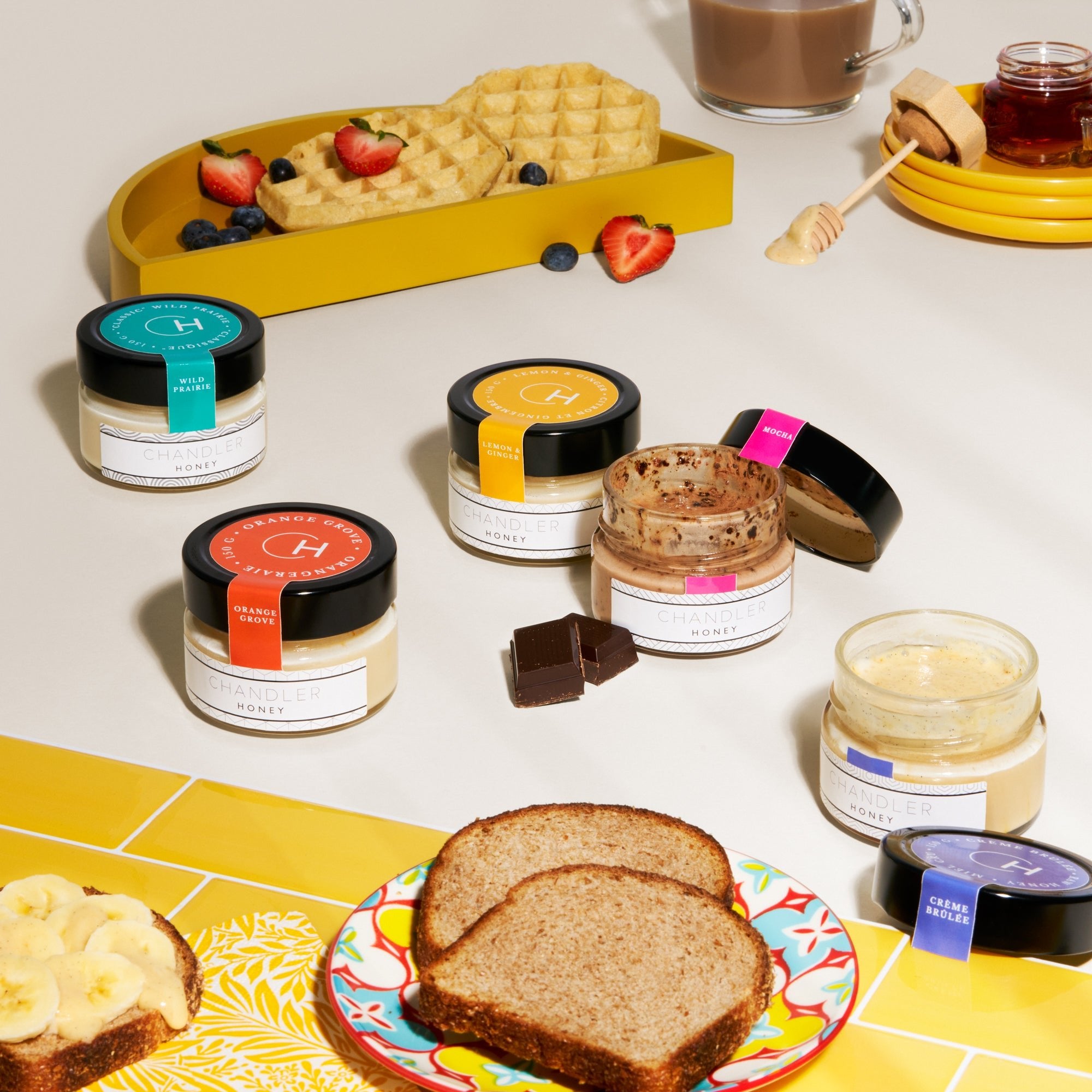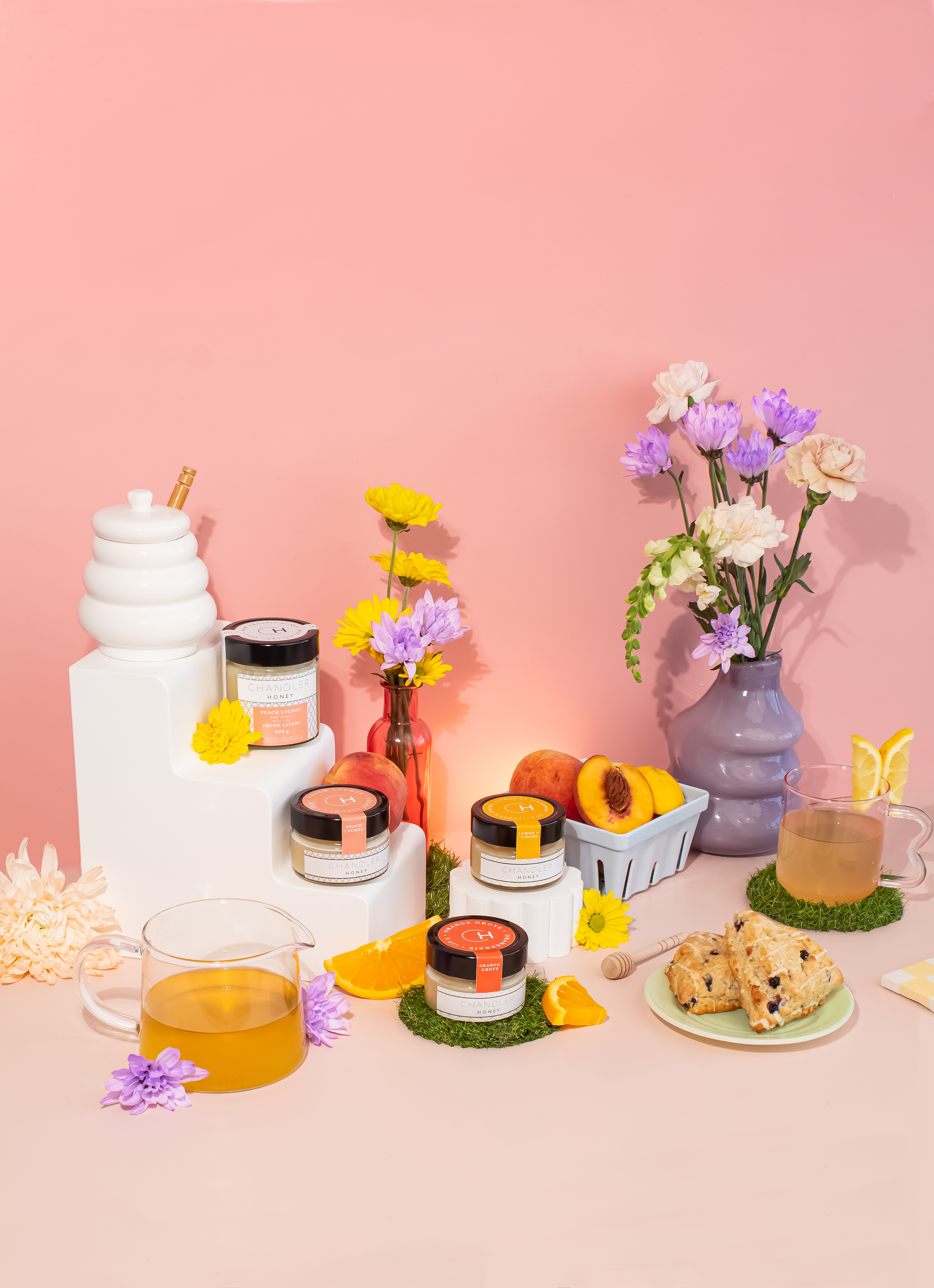The honeybee population continues to be in danger. In Canada, most beekeepers have winter losses of 15-30% of their hives every year, which has the potential to be hugely impactful to humans.
Bees have a significant influence on the world's plants and crops. Almonds, blueberries, apples, canola, and so many more crops require pollination from bees to thrive. The foods we eat are only possible because of our cute and furry friends.
Gratefully, there are small steps that we can take as individuals to help the bees. Planting a variety of different flowers that nourish bees and bloom at different stages throughout the year can be the first step. These wildflower plants are best planted within these Canadian Provinces.
British Columbia
Pacific Dogwood
The dogwood's exquisite white blossoms are native to southern BC. The trees are most known for their unique flowers (which bees love!), but they also create fruit that is eaten by local birds such as quail and grosbeaks.
Pacific dogwood grows best on deep, coarse, well-drained soils, often underneath larger trees.

Alberta
This province is known for its beautiful scenery and green lands. With its very cold and very warm summers these are the best wildflowers to plant:
Geraniums

Bees love Geraniums, especially ones with violet and blue blooms. These bright purple flowers need 4-6 hours of sun everyday; great to plant during the summer!
Wild Yarrow
Yarrow is a good pollinator plant because it attracts butterflies, bees, and other insects.
They have also been used for many years by Indigenous people to treat fevers, colds, loss of appetite, and hay fever. What a find! A wildflower that is not only medicinal for humans but is great for our Canadian bees!
Great thing about them is that they're not invasive, so they won’t take over your gardens!

Saskatchewan
Called the “Land of the living skies”, Saskatchewan is known for its wide open fields, sand dunes, and acres of lakes! This is a great place to plants your wildflowers:
Western Red Lily
These wildflowers can be planted in wetlands or woodlands because of their easy adaptability to different soils and climate conditions. These guys are also the floral emblem of Saskatchewan
Pink Cleome
Cleome is a favourite among beekeepers because it provides an abundant supply of nectar, resulting in delicious honey. The cleome spider flower is also known as the 'spider leg' or 'spider flower'. A word of caution: although it's a beautiful wildflower, pink cleome seeds are considered to be poisonous.

Manitoba
Prairie Crocus
On warm spring days, these blooms supply early nectar and pollen for bees who are just waking from hibernation. Some bumblebee queens will spend the night in the blossoms before deciding where to build their nest… talk about a royal seat!

Ontario
Wild Strawberry
Wild strawberries look a lot like the strawberries we are all used to seeing at the store, but they tend to be smaller and sweeter. These grow very well in Ontario and bees love the flowers that precede the berries!

White Trillium
Most people know of the White Trillium, it is Ontario's provincial flower. Because of their rarity, the Ontario government has designated these wildflowers as endangered. Planting these wildflowers will assist the bees in not only producing delicious raw honey, but also in recovering their numbers.

Quebec
Blue Flag Iris
Pollinators such as hummingbirds and bees rely on them as a food supply. Blue flag Iris is commonly utilized as an ornamental bloom to cover damp areas in gardens and embellish backyard ponds, in addition to being a pollinator food source.

Newfoundland and Labrador
Harebell

New Brunswick
Sow Thistle
These flowers are exceptionally high-value food plants for pollinators with very nectar-rich flowers, you could almost say these are the bees favourite…oh what sweet joy!

Prince Edward Island
Although this island is small, it has one of the most beautiful wildflowers.
Chicory

Oxeye Daisy
Pollinating insects, particularly bees, are attracted to the open flower-heads of the oxeye daisy.

Nova Scotia
Forget-me-not
Yup you read it right, these flowers are called ‘forget-me-not’. The brightly coloured petals and easy-to-access nectar make these little blooms a major hit with bees. Most bee species will love having Forget-Me-Nots in the garden!





Leave a comment